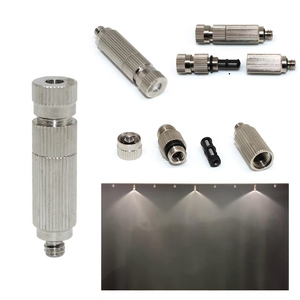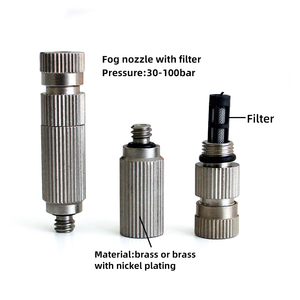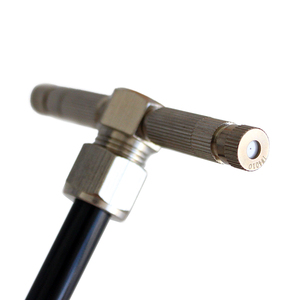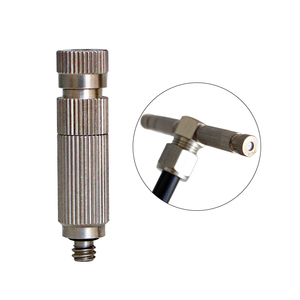
All categories
Featured selections
Trade Assurance
Buyer Central
Help Center
Get the app
Become a supplier

(34946 products available)



















































Factory fog lights are used to enhance visibility during poor weather conditions. They reduce glare and help drivers see the road better. There are different types of factory fog lights:
Halogen Fog Lights
Most vehicles come with standard halogen fog lights. They use halogen bulbs that generate a yellowish light. The light produced is not very bright. But, they help to light up the road close to the vehicle. The visibility gets reduced during rainy or foggy weather. Some drivers upgrade to brighter bulbs for better visibility. They are affordable and easy to replace if damaged.
HID Fog Lights
HID or High-Intensity Discharge fog lights are brighter than halogen lights. They produce a white light that is close to daylight. This allows drivers to see further ahead. The visibility is better during fog, rain, or snow. Some vehicles come with factory-installed HID fog lights. They use less energy compared to halogen lights. However, they are more expensive and complex to replace.
LED Fog Lights
LED fog lights are becoming popular in new cars. They give off a bright white light like HID lights. But, LEDs use even less energy than HID lights. Also, they turn on and off instantly. LEDs also last a very long time without burning out. The lifespan of factory fog lights depends on the type of LED used. Higher-quality LEDs have a longer lifespan. Fog lights with low-quality LEDs may dim or flicker over time. LED fog lights improve safety because they are so bright. Drivers can clearly see the road ahead. Some aftermarket options with different colors and brightness levels are available.
Laser Fog Lights
New technology laser fog lights are starting to appear. They emit an extremely bright beam of light using lasers. The visibility range is much greater than other types of fog lights. However, laser technology is still developing. As a result, they are not yet widely available on factory vehicles. Future vehicles may come with laser fog lights because of their excellent performance.
Projector vs Reflector Fog Lights
Both projector and reflector factory fog lights have unique designs that affect how they work. Reflector fog lights use a reflective bowl. It shapes the light from the bulb into a wide beam. Most halogen and some LED fog lights use reflectors. On the other hand, projector fog lights use a lens to focus the light into a beam. This results in a more controlled and sharper light compared to reflectors. Projector lights are preferred for HID and LED bulbs.
There are several specifications of factory fog that buyers should be aware of. Here are some of them:
Voltage
Vehicle fog lights come with different voltage options depending on the bulb type. Bulbs that have higher lumen outputs tend to have more voltage. For instance, halogen H13 and 9008 fog light bulbs are rated at 12-volts and 60-watt. While LED H10 and 9010 fog light bulbs are rated at 10-volts and 20-watt.
Bulb Type
Vehicle fog lights use various bulb types, including halogen, LED, and HID (high-intensity discharge) bulbs. Each bulb type has its own unique features. For instance, HID bulbs are brighter than the rest, while LED bulbs are energy efficient.
Brightness
Factory fog light brightness levels vary based on the type of bulb used. Generally, LED fog light bulbs tend to produce the brightest light. They have a lumen output of between 1,000 to 1,600 or more per bulb. While HID fog light bulbs range from 800 to 1,200 lumens. Halogen bulbs are the dimmest with a lumen output of about 400 to 1,000 or more.
Color Temperature
Color temperature for factory fog varies depending on the preferences of the end users. The standard color for fog lights is yellow or amber. This is because yellow is less glaring and penetrates fog better than white. However, some manufacturers produce white-colored fog lights.
Maintaining factory fog lights is important for safety purposes. Here is how to maintain them:
Check for Moisture
Inspect the fog light housing to see if there is any moisture present. If there is, remove the light and allow it to dry. Users can also use a dehumidifier to remove the moisture.
Replace Burnt Bulbs
Overtime the brightness levels of halogen and HID bulbs reduce. This is because they tend to have lesser lifespan than LED bulbs. So, users should regularly check their fog lights to see if the brightness level has changed. If it has, then they should replace the bulbs.
Clean the Fog Lights
Cleaning fog lights is a very important maintenance practice. This is because dirt, grime, dust, and debris can reduce the brightness level of the lights, thus posing safety risks. To clean the lights, drivers can use a damp cloth to wipe the surface clean. They can also use a mild soap solution to remove tough stains.
When buying fog lights for resale, here are some of the things to consider:
Light Output
Consider the lumens produced by the fog light. The brightness level should be suitable for the target audience's needs. Manufacturers often strive to provide a well-balanced output that meets various requirements.
Beam Patterns
When choosing factory fog lights, consider the beam pattern it produces. Some lights offer a wide-angle beam for broader visibility, while others focus on a more concentrated spot beam. Depending on the driving conditions and target audience preferences, a specific pattern may be more advantageous.
Bulb Type
Consider the bulb type used in the fog lights. Various options are available, such as halogen, LED, and HID bulbs. Each type possesses unique characteristics in terms of brightness, color temperature, and energy efficiency. Select a bulb type that aligns with the desired fog light performance and energy consumption.
Color Temperature
Color temperature is an important feature when choosing factory fog lights. It influences the color of the light emitted by the fog lights. Typically measured in Kelvin (K), fog lights with higher color temperatures produce a cooler, bluish tone. In contrast, lower temperatures result in a warmer, yellowish hue.
Durability and Weather Resistance
Fog lights should be durable and weather resistant. They should have a sturdy construction to withstand harsh weather conditions and road vibrations. Check for features such as waterproofing and corrosion resistance. This will ensure longevity and reliable performance of the fog lights.
Ease of Installation
Consider the ease of installing the factory fog lights for the audience. Some models offer straightforward plug-and-play installation, requiring minimal modifications. Others may involve more complex installations, such as wiring or mounting adjustments. Depending on the target audience's preferences and skill levels, fog lights with simple installation processes can be more appealing.
Replacing fog lights is a straightforward DIY process that requires basic tools and some mechanical knowledge. Vehicle owners should follow the steps below to replace factory-installed fog lights:
Tools required
Step-by-step guide
Q1: Why Are My Fog Lights Not Working?
A1: There are several reasons why fog lights may not be working. These include a blown bulb, issues with the fog light switch, wiring problems, or a relay malfunction. It's advisable to check each of these components to identify the cause.
Q2: Is It Hard to Replace a Fog Light Bulb?
A2: The difficulty of replacing a fog light bulb can vary depending on the vehicle model. In some cars, the fog light bulb can be replaced easily from behind the bumper. In others, it may require more disassembly. Generally, it is a task that can be done with basic mechanical skills.
Q3: Can I Upgrade My Fog Lights to a Different Color Temperature?
A3: Yes, it's possible to upgrade fog lights to a different color temperature, such as a brighter white or blue tone. HID and LED kits are available in various color temperatures. Choosing a color that complies with road safety standards is essential.
Q4: Do Fog Lights Use Different Bulbs Than Regular Headlights?
A4: Fog lights typically use different types of bulbs than regular headlights, and the bulb type can vary by vehicle. It's essential to check the owner's manual or existing bulb to ensure compatibility when replacing or upgrading fog lights.
Q5: Can Fog Lights Be Used as Daytime Running Lights?
A5: While fog lights can be used as daytime running lights, it's essential to check local regulations. In some places, fog lights used as DRL must be less bright or positioned differently to avoid dazzling other road users.